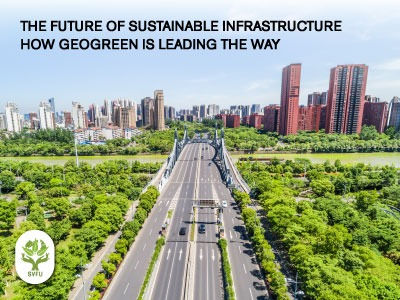Coir in Civil Engineering: Nature’s Solution for Soil Stabilization & Erosion Control
- Dr. Manali Date.
- May 24
- 4 min read
Rapid industrialization and urbanization are imposing a drastic toll on the consumption of all natural resources. The pollution caused by industries in water and air needs to be addressed by amending the raw materials with natural and environment-friendly ones. The use of water needs to be cut down, otherwise this freely available resource will become scarce shortly. Similarly, green cover is getting reduced at an alarming rate. It needs to be increased by all possible means to target the reduction of carbon dioxide and induce a low temperature in the atmosphere.

It is the need of the hour to apply substitutions in the form of sustainable and nature-based infrastructure solutions for conventional materials in all possible applications. One such resource ignored by most infrastructure and industrial sectors is the development of green cover and ecological balance by the protection of barren slopes, which eventually undergo erosion and become unstable. Either the lack of vegetative cover from the slopes or the instability of the slope leads to its sliding.
It is observed in past research work that in a large number of situations, the erosion of such overburdened dump slopes is brought about by an imbalance in the internal moisture level of the dump particles. When the moisture level is too high, the particles of the dump start falling by themselves when the dump exceeds a certain height. On the contrary, when the internal moisture level is very low, they do not possess sufficient properties of shear strength to hold themselves against external forces. Hence, erosion is bound to occur in both cases. Erosion and spreading of such non-fertile, metal, and mineral phase particles, which are deficient in nutrient value and suitable pH over the surrounding fertile soil, disrupt the fertility of that soil and make it worthless for agricultural purposes.
Benefits of coir mats in infrastructure projects!!
Coir geotextiles are the most ideal type of material applied in such cases. It is one of the most emerging eco-engineering trends of 2025. It is biodegradable and maintenance-free. It supports the growth of vegetation. Its installation methodology is fast and compact. The coir erosion control blanket proved to be the best alternative against other conventional erosion control methods from the point of view of cost and environmental stability. These are used in many roads, railways, and other projects for safeguarding slopes and erosion control. They constitute a low-impact road construction tool and a suitable climate-resilient engineering practice.
The coir erosion control sheets are self-repairable as well as economical in comparison to other traditional erosion control methods. It is suitable for long-term applications to ensure safety against sliding as well as for providing vegetative cover. The installation method is also rapid and is executed with a reduced labor cost than stone-pitching. The coir mat is a bioengineered geo-composite crafted from non-woven natural fibers and woven synthetic lattice. Designed to perform all geotextile functions, it effectively combats surface soil erosion, ensuring long-term slope stabilization and environmental sustainability.
Coir fibre vs synthetic geotextile!!!
Different conventional mechanisms of slope protection methodologies have been tried and tested for a long time. Whenever a particular type of slope protection technology is being implemented, it becomes detrimental to maintain a balance between the successful performance of the technique and the preservation of the environment at the same time. Some of the past studies on mechanical means of slope protection include the application of riprap, stones, concrete slabs, sizing blocks, or flexible meshed concrete slabs, to enhance slope protection by providing attributes of mechanical strength. Some of the drawbacks of these methods are: in the case of blocks or concrete slab cover, if these are devoid of any vegetation, it becomes costly as it involves the work of mortaring and a large number of stone resources as well. Also, when any slope protection measure is without any ecological template, it is easily influenced by the environment in terms of durability, adaptability, and structural stability.
It is of utmost necessity to balance mechanical and ecological properties in the context. One of such measures taken for safeguarding the slopes is the use of bioengineering technology. Bio-engineering methods are preferred due to their low cost and lower long-term maintenance. It possesses the exclusive property of providing inherent strength over time as the roots grow further, entangling with each other, thereby increasing its structural stability. Especially in the case of those areas that have less access, this method proves to be compatible enough under all circumstances.
This new ecological slope protection method uses the principle of bioengineering by developing a slope protection product using coconut husk called a coir erosion control blanket. It is made from naturally available coconut fibers, mechanically bonded with a synthetic lattice. Moreover, it is eco-friendly and biodegradable as it has a high amount of lignin content, which makes it resistant to insects, molds, and rot.
Using coir for sustainable road construction!!!
Its main merit is that it can retain moisture for a long interval of time. Once the vegetation starts, the porosity of this upper layer increases, and therefore, it helps in the growth of vegetation. The roots of these vegetated species get entangled with each other and provide support in holding the erosion control blanket and making these restored areas beautiful. The erosion control blanket is cost-effective and self-reliant. It is strong enough to be used in the most severe climatic conditions and rainfall. Below are some real-world examples of the application of coir erosion control blankets.







Comments